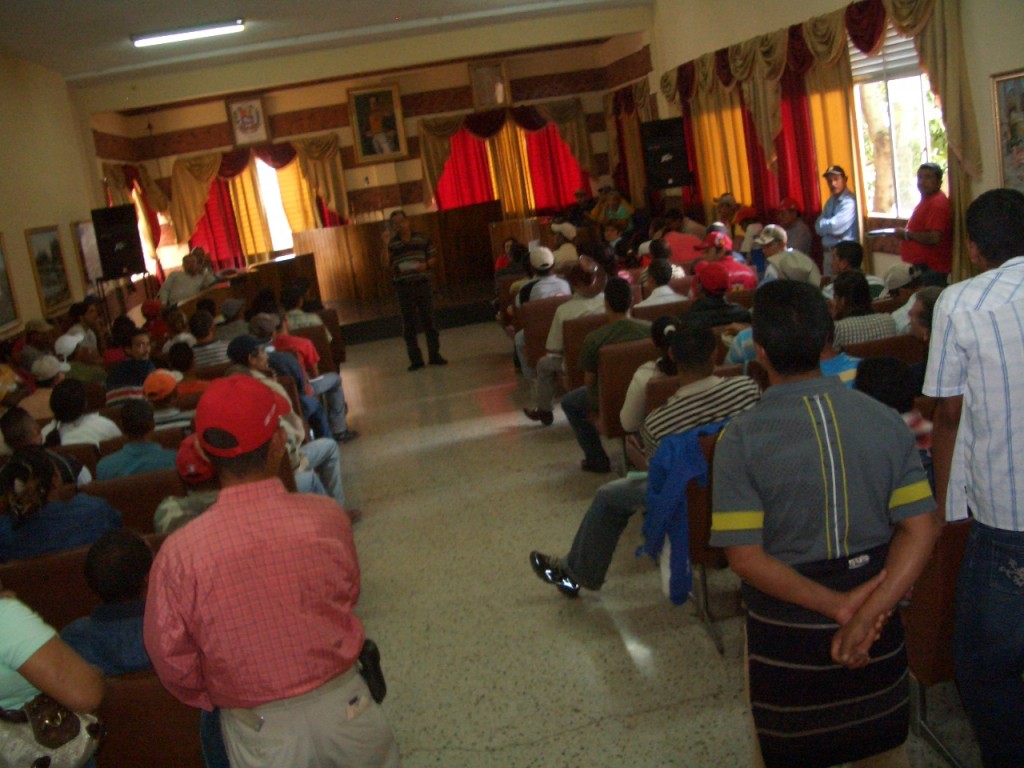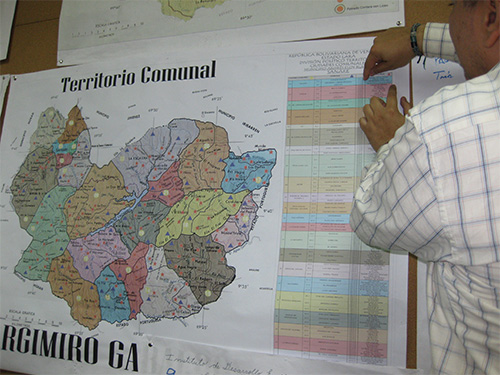By Pablo Vivanco

All photos by Errol Young
It’s fairly obvious that there is concerted effort to make Venezuelan President Hugo Chavez and the ‘Bolivarian Revolution’ that he represents the hemispheric pariah. Mainstream news sources constantly lay a barrage of accusations that Chavez is an autocrat that is desperately shutting down venues for thinking and critiquing his government in a quest for centralized power. This reality led 15 activists from Canada to participate in the first delegation of the Norman Bethune Front – a people to people solidarity project with popular movements in Venezuela. The folks from Canada went to see what this ‘Bolivarian Revolution’ was all about during their month long exposure to Venezuela’s neighbourhoods, people and the organizations that they have been building. I went as their translator/ organizer.
Caracas served as a convenient base for the majority of our time in Venezuela. By far the largest City and political centre of the country, we figured that it would be the best place to get a sense of what was happening in the country. Famous for being the birthplace of Latin American political demi-gods such as Simon Bolivar, Caracas is by all accounts a tremendously fast paced metropolis with an urban density dilemma. Compounded by decades of social neglect, lack of planning and human capital generation (which relates to absence of equitable distribution of Venezuela’s oil wealth) the vast majority of poor people live in the hillside neighbourhoods that look much like the infamous favelas of Brazil’s urban centres. Neighbourhoods such as La Vega and Antimano where we had been staying are notorious within Venezuela and as such many middle and upper class Caraquenos would never even think about stepping inside. If they had, perhaps they could understand why the majority of Venezuelans had re-affirmed the Bolivarian mandate more than 12 times since 1998. It’s in these places where there is a need and appetite for revolution and where there is evidence of significant social change.
Nonetheless, the City is crowded and hectic with poor air quality and aesthetically displeasing architecture mostly a product of the mish-mash of improvised housing and the constructions of the 1950’s under the modernist autocrat Perez Jimenez. An opportunity came to visit other areas and we were elated to leave Caracas for a while.
It was a perfect time to leave the Venezuelan capital. Mid-week and cloudy, we were sure to make good time and in a comfortable environment towards the coffee growing region on Lara. Safety was always a concern in Caracas. However, undoubtedly more dangerous than any part of Caracas was screeching through the winding, mountain side road on way to Sanare. In the heart of the cafetelero region in Lara, Sanare is the epicenter of the well-organized movements and projects of these rural workers in families. Upon arriving at the town we were greeted by Pepe Etura, an organizer with the Frente Nacional Campesino Ezequiel Zamora one of the largest and most organized groups in all of Venezuela.
 Pepe, a former member of the Venezuelan Special Forces, brings us to the local City Hall to observe a meeting around the formation of Communal Socialist Public Enterprises for the area. We walk into a packed room of 300 or so spokespeople of the Communal Cities within the Communal Territory who are engaged in a passionate debate about the direction to take in the formation of these enterprises. However, we had wait until after this session to be informed on what these Communal projects entailed.
Pepe, a former member of the Venezuelan Special Forces, brings us to the local City Hall to observe a meeting around the formation of Communal Socialist Public Enterprises for the area. We walk into a packed room of 300 or so spokespeople of the Communal Cities within the Communal Territory who are engaged in a passionate debate about the direction to take in the formation of these enterprises. However, we had wait until after this session to be informed on what these Communal projects entailed.
In Caracas, we became familiar with the work of Communal Councils. These are essentially neighbourhood associations of 200-400 families within an area who come together, bring in all local committees and social groupings to make a more responsive and democratic institution to resolve the issues in the community. Once registered following a community driven process to consolidate the council and elected spokespeople these Councils serve as quasi-governmental organizations that can tap into government funds for local infrastructure as well as other projects. Since the Communal Council’s law was passed in 2006, more than 20 000 of these Councils have been organized by citizens in Venezuela. In speaking not only with local people but also City Councillors we learned that the idea behind these Council’s is to replace municipal government with more participatory, and perhaps more accountable institutions.
In Sanare and indeed in other parts of Lara, they are pioneering what are the logical next steps in this thinking. Neighbouring communal councils are coming together to form Communes. While no law yet exists for the formation and jurisdiction of communes, communal councils are actively coming together to form these structures. Like the Councils, these communes would theoretically also be entitled to government funding for projects deemed necessary by those communities following a process to determine what the needs are. Beyond this, Sanare is also forming Communal Cities (groupings of neighbouring communes) and have formed the Agrimiro Garibaldo Communal Territory that is comprised of all of the Communal Cities in the region. Pepe also tells us that following extensive community processes, the people in the areas have even chosen the names of all of these new structures for participatory government including that of the Territorial Commune which was named for a famed guerrilla fighter in the region during the 1970’s.
Since the election of Chavez in 1998, there has been an explosion of political organizations, in all sectors and from both ends of the political spectrum. The Venezuelan Constitution passed by a huge margin in 1999 defines Venezuela as a ‘participatory’ democracy that has led Chavez and the movements that support him to work towards alternate forms of government and planning.
While the Constitution provided the foundation for making these changes, it also provides limitations in that the constitution sets out the orders of government and their jurisdictions. Hence a campaign was launch around what was considered the 5 motors of the revolution, including the need for an “the Explosion of Communal Power” (5th motor) as part of the plan to construct a “New Geometry of Power” (4th motor) by reorganizing the nation’s political structure. These communal power structures being constructed by organized communities are meant to hand power down to the people in smaller, more participatory and democratic units that are meant to replace the previous structures. Chavez tried to enshrine these in law in the 2007 Constitutional reforms which were narrowly defeated no doubt in part to the lack of enthusiasm by some ‘Chavista’ politicians who see this as a threat – and rightfully so – to their positions and careers. Now these are being debated thoroughly and passed into law, one by one. People are waiting on it though.
As the session and explanations came to an end, we could hardly make sense of what had been explained. How would water provision be managed? What about garbage? How would the workers from the Communal Enterprise be hired? Truth be told, we didn’t ask Pepe most of these questions. Perhaps he wouldn’t have been able to answer them to our satisfaction. Perhaps our cynical minds, cased in the paradigm of North American capitalism where citizenry is voting every four years and not littering, the thought of a system based and continuous and active participation of polity is too much to digest for one day.

